





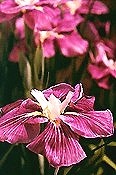
Most gardens host at least a few tall bearded irises, rugged plants known for their sword-shape leaves and paper-petal blossoms. Yet beardeds are only a fraction of the iris bounty. Among the other irises, you'll find an enticing flower and foliage treasure trove, especially the graceful, grassy-leaved Japanese and Siberian irises featured here. These low-maintenance, disease- and pest-resistant perennials are attractive over three seasons -- in and out of bloom.
Like a twirling dancer swathed in silk scarves, the petals of the Japanese iris Beni Tsubaki, above, flair horizontally to create saucer-shape blooms. Japanese gardeners have prized these regal irises for more than 500 years, and for good reason. Japanese irises boast the largest flowers of all irises, up to 9 inches across, and can extend the iris season into July.
A single, slender Japanese iris stem often produces three or four flowers. Though each blossom lasts only a few days, an established clump, such as Nikko, can flower for two weeks or more. Sturdy stems need no staking.
continue reading below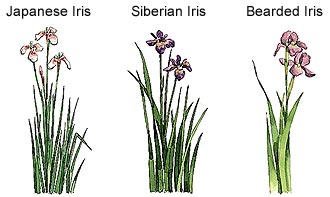
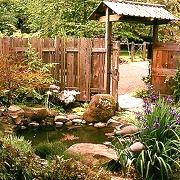
Iris flower size and shape vary, but the general build is constant. Each bloom consists of three upper petals called standards and three lower sepals called falls. Gentle arcs of blue-green, ribbed Siberian iris leaves, above, help paint a peaceful pondside scene. Siberian and Japanese irises thrive near water, not in it.
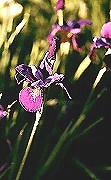
Deep blue-violet, dew-kissed blooms of Tycoon glisten in the sun. Siberian irises require less labor-intensive digging, dividing, and replanting than tall beardeds.
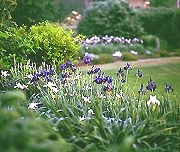
Stately Siberians bloom late spring to summer on stalks up to 4 feet tall. Massed, above, they shine in the middle or back of mixed perennial and shrub borders.
Forget what you know about growing tall bearded irises. They thrive in limy, well-drained soils that bake toward summer's end. Japanese and Siberian irises, native to seasonally marshy meadows, thrive in damp earth.
In fall, plant the winter-hardy rhizomes 2 inches deep in moist, rich, acidic soil in the garden or along pond or brook banks. Both plants bloom best with full sun, but each prefers a few hours' shade in regions with sizzling summers. Keep them well-watered during dry periods.
Soak Siberian iris rhizomes in water for a few hours before planting. Place where they can remain undisturbed. Siberians bloom best when well-established, which takes several years. Divide old clumps in early fall after they've developed balding centers, about every six years.
Japanese irises are more demanding of acidic soil. Amend neutral or limy soils with peat moss. Divide crowded clumps in fall, about every three to four years. Be mindful, Japanese iris won't abide wet feet in winter.
Top-dress both iris types with aged manure or compost in early spring and after blooming. Remove dead foliage in late fall.
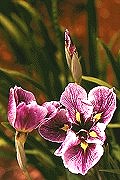
Exotic flowers exist outside the tropics. Laced with deep purple veins, Japanese iris Persian Rug illustrates why irises are called the orchids of the North.
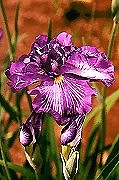
Fresh blooms, like those of the Japanese iris Electric Rays make excellent cut flower arrangements. Otherwise, remove spent blossoms from plants.
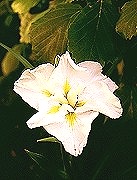
Like all Japanese irises, color-rich Juno should be pampered with peat moss. Japanese irises are less tolerant of alkaline (limy) soils than pliant Siberians.

Forest-green foliage backgrounds beautifully showcase iris color and form. The pristine white Japanese iris Geihan gleams in front of a fothergilla shrub.
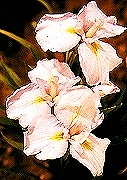
Japanese iris blossoms are displayed well above their 2- to 3-foot bright green foliage. Enduring Pink Frost, left, is considered tall with its 3-foot leaves.
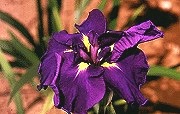
Velvety, crepelike petal texture is a hallmark of the Japanese iris. Like all Japanese irises, plush Sparkling Sapphire appreciates protection from harsh wind.
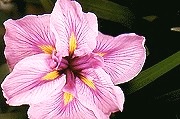
Named for a corded, sheer dressmaker's cloth call dimity, Japanese iris Pink Dimity is groomed for fairy garden festivities. But you don't need a magic touch to grow these easy-care plants.
Gardeners often plant tall bearded irises where the plants' waning, mottled summer foliage will be inconspicuous. But Japanese and Siberian iris plants remain attractive spring through fall. The narrow, vertical clumps have as much structural appeal as an ornamental grass. Think of them as bold exclamation marks for your garden. Use them for their color, texture, and form in moist, sunny, high-profile spots.
Copyright © www.100flowers.win Botanic Garden All Rights Reserved